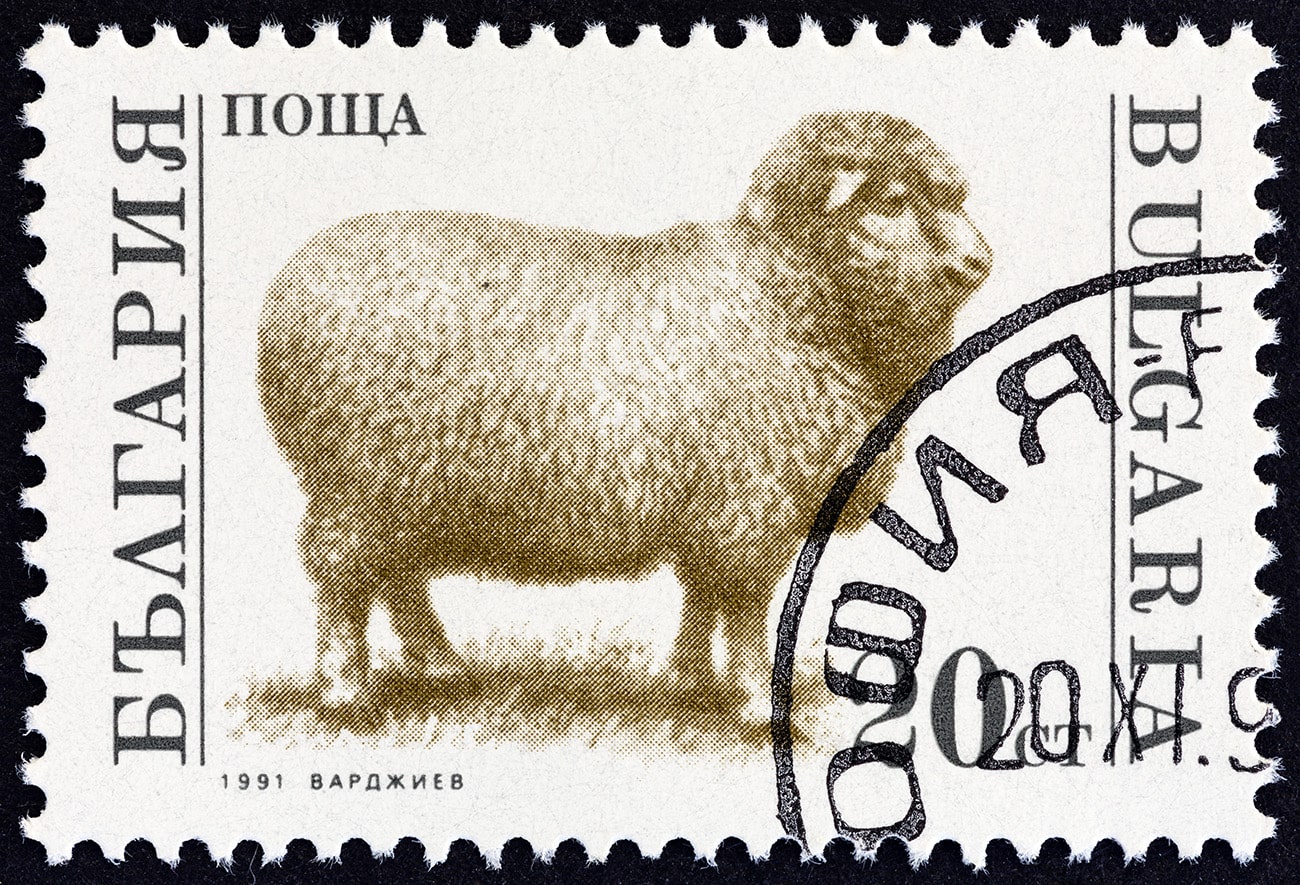
Ever since we domesticated sheep approximately 10 000 years ago, our lives have been irreversibly interwoven with theirs. Unlike the exotic pet fads that come and go, the relationship between people and sheep has been stronger than ever. In exchange for security and food, sheep blessed us with the one raw material that keeps on making people warm and healthy – wool!
From a survival necessity to a commodity synonymous with health, wool earned its place within the ranks of the most useful organic materials. Wool is a product so prolific in its benefits and usage that its popularity spilled over into the culture and traditions of numerous peoples.
Under the form of a Golden Fleece, wool made it as a status of kingship in Ancient Greek mythology. Whole countries, such as New Zealand, look up to wool as their national treasure and economic engine. Even US president Woodrow Wilson enjoyed the perks of being a part-time shepherd by introducing sheep on the White House lawn and selling their wool to support the Red Cross during WWI.
But what about wool in Bulgaria?
Being the oldest country in Europe, Bulgaria has no other choice but to have a deeply rooted relationship with something as ancient as wool. Turning to any page of the Bulgarian history books will most likely make you read the word “wool” at least a couple of times. From the ten-century state-of-the-art woolen “saddles” to the great variety of traditional clothing and bedding, wool seems to be a timeless Bulgarian classic. It’s a product cherished throughout the ages which certainly holds an ancestral certificate of approval.
If you visit Bulgaria, you will be impressed by the sheer number of freely roaming flocks of animals. Throw a rock in the middle of any green pasture and chances are it will land on either a sheep or a singing shepherd. The saturation of so many sheep herds is both a celebration and a testimony to the environment-friendly practices of traditional animal agriculture. The animals are taken care of with respect and are allowed to eat freely their natural diet of herbs, weeds, and shrubs.
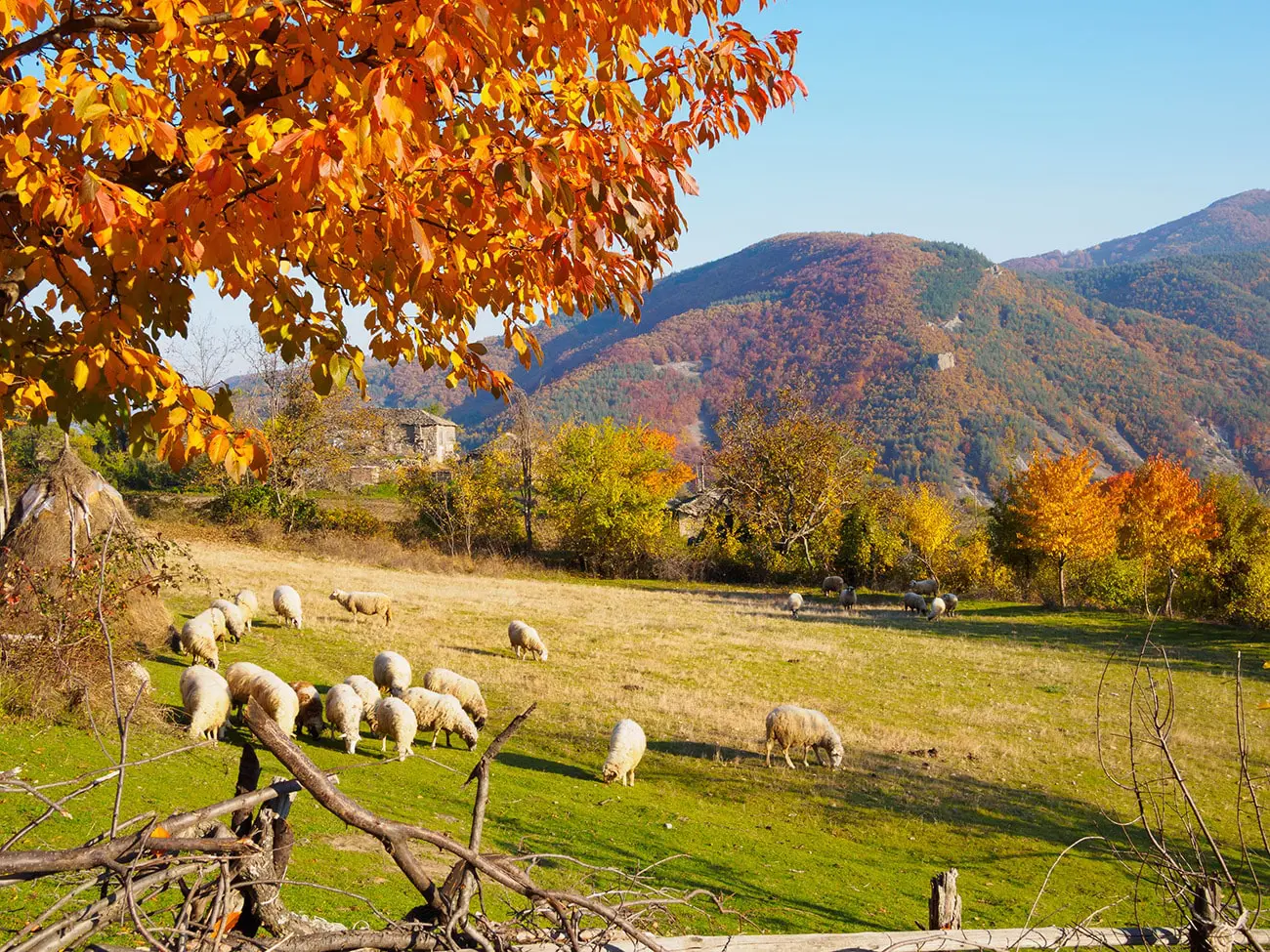
In Bulgaria, the sheep is not merely an economic unit, but a folklore rock star.
Much of the poetry and prose during 19th-20th century Bulgaria was devoted to the land, animals, and working people. Bulgarians idealized the pastoral landscape and viewed their animals as a fruitful life force. These beliefs can be best echoed through some of the rituals and holidays in the Bulgarian calendar.
Тhe Kukeri tradition
The Kukeri tradition started approximately 6000 years ago as a pagan ritual performed to ward off evil spirits. Kukeri is of Thracian origin and means “tall masked people.” As you may guess the performers wear masks and dress in thick fur or wool clothing, imitating a beast-like creature of superior stature and unwelcoming face. Around the waist, big copper bells supplement the performer’s dancing with a deafening soundtrack that can best be described as a distressed herd of cattle. Often a purifying agent is involved during the festival – the Кukeri perform their sacred dance around a raging bonfire. After that they visit all the houses within the village to bring fertility and well-being, all the while warding off any evil spirits.
The look, size, and shape of the Kukeri costume depend on the location it is performed and the preferred taste of the local people. However, the use of wool remains a vital trademark of the festival – most often the masks and costumes are entirely made out of or decorated with wool. Since the potency of the magic is believed to be preserved in the ritualistic clothing, it’s rather interesting to see the wool be perceived as a purifying material. It is only when the Kukeri performer surrounds his body with wool that he can fight off the evil spirit.
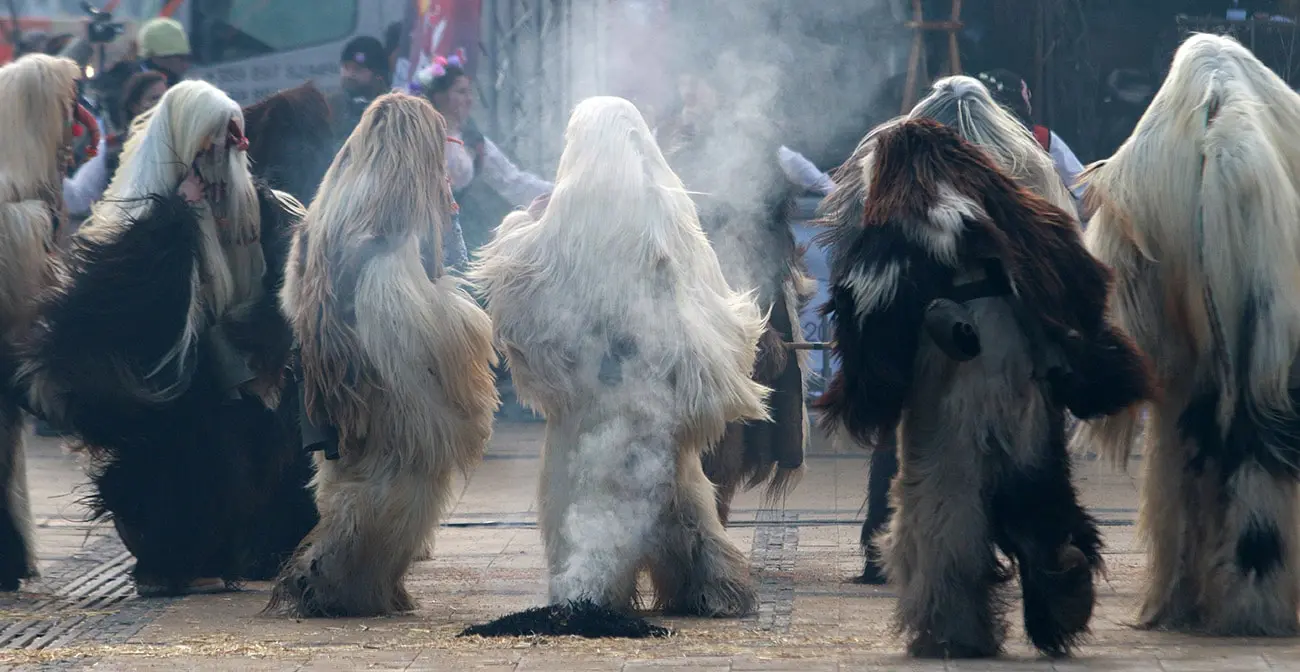
In a pleasant coincidence, whether or not you believe in ghosts, wool truly is a material that can ward off forces invisible to our naked eye. You may not see or smell them, but the dust mites certainly are aware of your existence. These microscopic flea look-alikes happily reside in your mattresses and beddings, all the while feasting on your flesh. Their appetite for dead human skin is almost as infamous as their ability to cause allergic reactions in people, ranging from mild rashes and runny nose to life-altering asthma.
Without a doubt, عث الغبار are parasitic since they offer nothing but trouble. Luckily for you, wool is more than altruistic and acts as a natural dust mite repellent. By creating a dry environment that the dust mites cannot stand, wool makes your mattress uninhabitable for these allergy-inducing creatures.
It’s fascinating seeing how the instincts of our ancestors guided them to the idea of wool being a natural repellent to the forces that harm us! Wool feels right and soothing to the touch, its fibers and texture are refreshing and rejuvenating – maybe it shouldn’t come as a surprise that people use it in rituals involving white magic?
Тhe Grandma Marta tradition
On the 1st of March, Bulgaria transforms into one giant bracelet festival. Baba Marta, the mythical matriarch, sweeps away the harsh winter under the rug and brings the festivities of the spring with her. People from all walks of life gift each other hand-made woolen or cotton bracelets called Martenitsa.
Colored in red and white, these seasonal trinkets are not only a form of celebration of the upcoming spring but are also meant to bring health and happiness, all the while warding off any evil spirits. The bracelets stay on your wrists until you see a stork – after your encounter with the bird, you should leave the Martenitsa on a nearby tree as a ritualistic sign that you have finally witnessed the arrival of the spring.
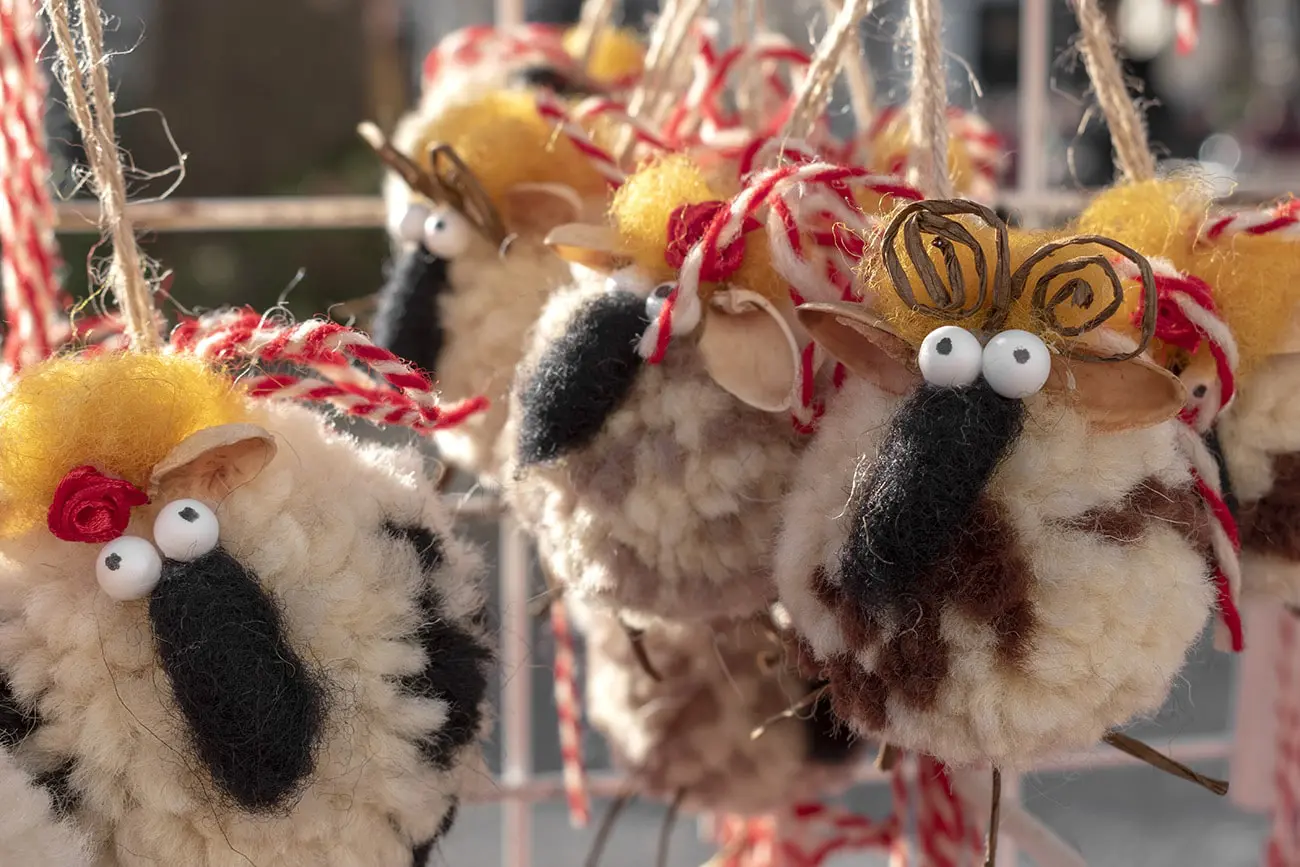
On a surface level, the importance of the holiday comes from its social nature – family, friends, and the general community open up and grow closer. However, once you go down the staircase you can’t miss the fact that the symbolic meaning behind the Martenitsa is at the core of the ritual. It is the act of wishing good health to your fellow neighbors that makes Baba Marta such a memorable holiday. But how is this conveyed? It would be in bad taste to give someone your best wishes and then tie a bracelet made out of poison ivy around their wrist. Of course, the vehicle for the message is yet again wool!
As an irreplaceable part of the Bulgarian traditional clothing and bedding, wool organically found its way into the magical and religious. Could it be that its numerous health benefits that only modern technology can decipher, made it a reoccurring element in health-promoting rituals? From lowering your heart rate and fighting off mold, to promoting better sleep, wool is a jack of all trades that has been long recognized by our ancestors as a source of health and prosperity.
مواصلة القراءة
الصوف في مقابل المواد الكيميائية المثبطة للهب
هل نستخدم مثبطات اللهب في مراتبنا؟ لا، لا نستخدمها! لدينا شيء أفضل. لدينا الصوف! لكن ما كل هذه الضجة؟ أليست مثبطات اللهب جيدة...
النوم على الصوف: فوائد مرتبة الصوف
لماذا الصوف؟ ما هي فوائد مرتبة الصوف؟ هل يمكن أن يساعدك الصوف حقاً على النوم بشكل أفضل؟ هل مراتب الصوف مريحة؟ هل هي آمنة؟ ألا تجعلك...
النوم على الصوف: فوائد وسادة الصوف
Way back in time apes began building sleeping platforms and wooden pillows to improve their sleep. It was the Greeks and the Romans in Ancient Europe that mastered…

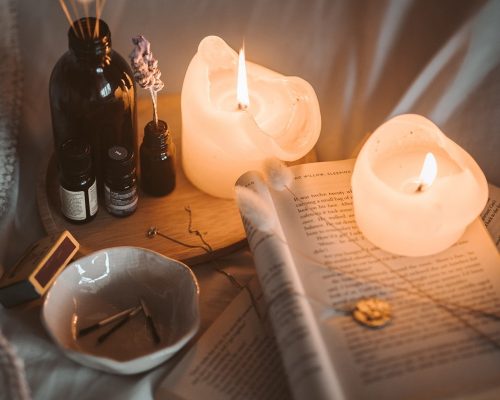


people talk a lot about using wool to insulate houses and cars, is there a market for it in bulgaria. I am about to buy a small house there and would like to insulate with wool
Hi Salma, yes, wool’s amazing qualities make it a great option for insulating houses! We’re sending you an email with more details.